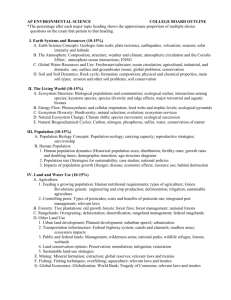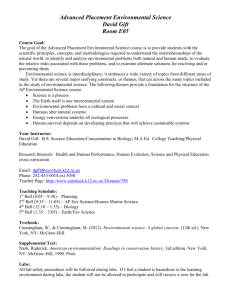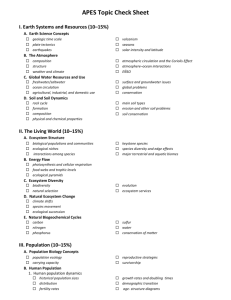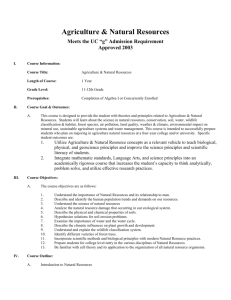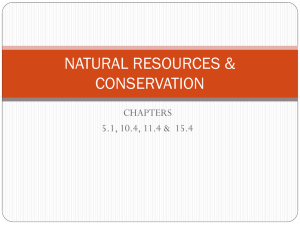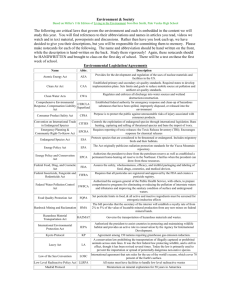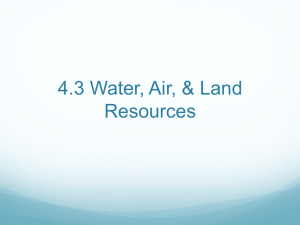word - Ministry of Environment and Forests
advertisement
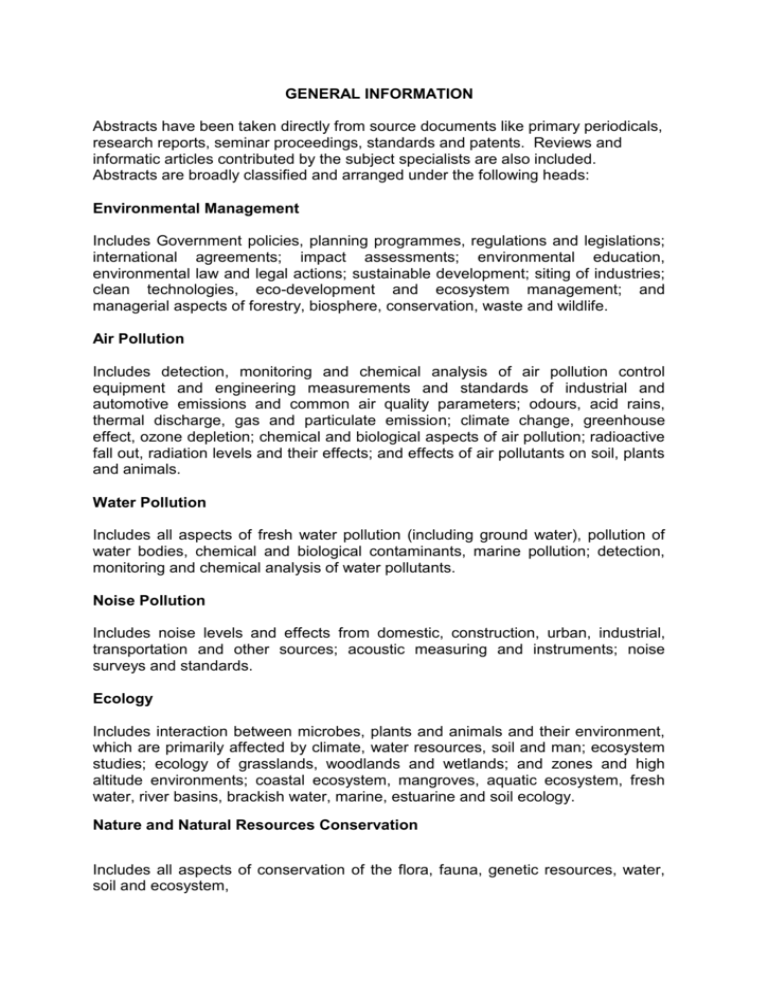
GENERAL INFORMATION Abstracts have been taken directly from source documents like primary periodicals, research reports, seminar proceedings, standards and patents. Reviews and informatic articles contributed by the subject specialists are also included. Abstracts are broadly classified and arranged under the following heads: Environmental Management Includes Government policies, planning programmes, regulations and legislations; international agreements; impact assessments; environmental education, environmental law and legal actions; sustainable development; siting of industries; clean technologies, eco-development and ecosystem management; and managerial aspects of forestry, biosphere, conservation, waste and wildlife. Air Pollution Includes detection, monitoring and chemical analysis of air pollution control equipment and engineering measurements and standards of industrial and automotive emissions and common air quality parameters; odours, acid rains, thermal discharge, gas and particulate emission; climate change, greenhouse effect, ozone depletion; chemical and biological aspects of air pollution; radioactive fall out, radiation levels and their effects; and effects of air pollutants on soil, plants and animals. Water Pollution Includes all aspects of fresh water pollution (including ground water), pollution of water bodies, chemical and biological contaminants, marine pollution; detection, monitoring and chemical analysis of water pollutants. Noise Pollution Includes noise levels and effects from domestic, construction, urban, industrial, transportation and other sources; acoustic measuring and instruments; noise surveys and standards. Ecology Includes interaction between microbes, plants and animals and their environment, which are primarily affected by climate, water resources, soil and man; ecosystem studies; ecology of grasslands, woodlands and wetlands; and zones and high altitude environments; coastal ecosystem, mangroves, aquatic ecosystem, fresh water, river basins, brackish water, marine, estuarine and soil ecology. Nature and Natural Resources Conservation Includes all aspects of conservation of the flora, fauna, genetic resources, water, soil and ecosystem, Health and Toxicology Includes toxicology of pesticides, heavy metals, industrial and agricultural chemicals and other environmental contaminants; effects of toxic materials. fertilizers, pesticides, etc. on human, animals, plants and soil; contaminants measurement and methodology; occupational and public health; use and transportation of hazardous materials; industrial accidents and safety. Wastes Includes collection, treatment, disposal, reuse and recycling of agricultural, animal, industrial, municipal and domestic wastes; procedures, engineering, plant operation and quality control methods applied in such processes and other aspects of waste management. Forestry Includes afforestation, including social forestry and energy plantation; deforestation; ecology and management of forests; influence of forest on the physical environment; protection of forests; soil conservation and erosion of forests; watershed/catchment management; endangered and threatened plant species. Wildlife Includes wildlife management and conservation; study of animal habitats, game preserves, bird sanctuaries, natural areas and refuses; endangered and threatened animal species; animal behaviour, damage and predation of and by mammals; marine animals, birds, amphibians and reptiles, fish etc., and environmental impacts on wild life. Energy Includes general environmental impact of energy development and utilisation. Plant and Pollution Includes responses of the plants to various pollutants; plants as pollution indicators; and Bio-pollutants from plant species.


